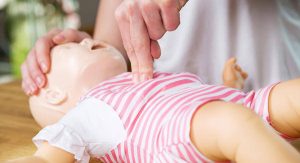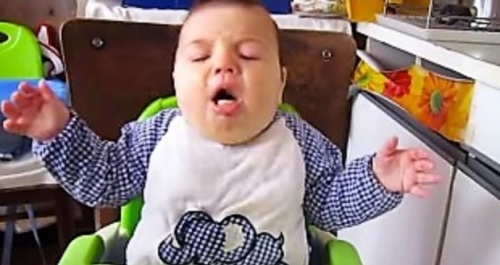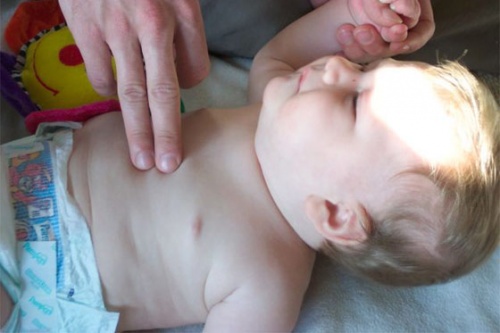How to Perform CPR on a Baby

Having to perform CPR on a baby that is suffocating is one of the most traumatic experiences that we can go through as mothers. It is an event that we hope never to encounter. However, like many other things, it’s something than can happen at any moment.
We like to believe we are up to the challenges of motherhood: Nine months of pregnancy, the aches and pains of labor, breastfeeding, raising a child… But nothing prepares us for that awful moment when our child’s life is in danger.
Just the same, we are women. And as women, we are able to rise above any circumstances in order to save our little one’s life.
The best thing you can do in the face of an emergency is be prepared. Learn all you can now about how to perform Cardiopulmonary Resuscitation (CPR) on babies.
And if you ever find yourself in a situation where you have to use it on your child, hold back the tears and rely on your training to save his life.
Take precautions to avoid accidents
Babies are incredibly mischievous and curious little things. They are constantly on the lookout for new adventures. Their universe is enormous and full of flavors.
But babies are unable to recognize danger. Even if a wild ferocious beast were to come running up to them, they would simply sit still and observe the rapidly advancing animal.

A baby’s innocence and desire to explore and experiment are endearing. But when combined with the dangers that may exist in your home, they can be a recipe for disaster.
So, the first thing to do is provide your child with a risk free environment. Create a safe space where your child can crawl, move around, and explore the world around him.
Your child’s play area should contain toys that are appropriate for his age. There should be no miniature toy soldiers, marbles, or small game pieces, etc., that he can stick in his mouth.
If a stuffed animal is damaged, you should remove it. The stuffing inside may catch your little one’s attention; he might put it in his mouth to see how it tastes and feels.
Please be sure to put these safety measures into place before allowing him to move around and explore freely. Infants are always looking for something to put in their mouths.
Learn what leads to suffocation and what the consequences are
You should know that suffocation is produced when the lungs do not receive enough oxygen needed in order to breathe.
Our respiratory airways are what normally allow the flow of oxygen into our lungs. These airways can become blocked by the introduction of a foreign object, among other causes. When this happens, the result is choking.
Any time that breathing is obstructed, resulting in cardiopulmonary arrest, whoever is there to tend to the victim has just seconds to resuscitate him and restore breathing.
If CPR is not performed in time, the resulting brain damage is irreversible. But in the worst of cases, choking can result in death.

A crucial detail that you should never forget
You may be surprised to read that your first response upon seeing that your child is choking is not to rush directly to tend to your baby.
Of course, a few pats on the back might be enough to free the foreign object that’s blocking your little one’s breathing. If so, the event will go down in the books as nothing more than a scare.
But the fact of the matter is, at first glance, you can’t determine the seriousness of the problem. If you see that your child is choking and you are alone with him, quickly call 911.
Once help is on its way, then you can proceed to do whatever is necessary to save your child.
Suffocation caused by choking
Parents, if you realize that your baby is having a hard time breathing and you suspect he may have stuck an object in his mouth or up his nose, do not try to remove the object.
More often than not, your attempts will only make things worse, forcing the object even deeper inside your child’s airway.
If your child is coughing, allow him to continue doing so for several seconds, but don’t wait too long. Place your child face down on your forearms and kneel down in a way that places your baby’s head just below his body.
Support your baby’s head and neck with your same arm. With your other hand, hit your baby’s back just between the shoulder blades.
Pat your child firmly, but not too hard. And allow a moment between one stroke and the next.
Performing CPR on a baby
If the previous technique does not produce the desired effect, your child may go into cardiac arrest. You must be prepared to resuscitate.
In this case, you will need to use Cardiopulmonary Resuscitation, more commonly knows as CPR. The technique for doing CPR on babies is similar to adult CPR, but with some variations.
To begin, we recommend you lie your child down face up on a hard surface.
Then, place your middle finger and your ring finger from one hand in the center of your child’s chest. Feel for the sternum, just below his nipples.
With your two fingers, you should push down on your baby’s chest, up and down, approximately 30 times in a row.
Each time that you press down, release pressure and allow your little one’s chest to go back up into regular position – but maintain contact between your fingers and the sternum at all times. Then press down again and continue the process successively.
When you have gone through 30 repetitions, begin assisted breathing. First, place your mouth over your child’s face so that you cover both his mouth and nose with your own mouth. Then, gently blow air into your child’s lungs. You will notice your child’s chest and belly rising as you blow in.
Wait a few seconds for the air to come out and then repeat the breathing technique once again.
At this point, you should go back to performing thoracic compressions as you did before, followed by another two breaths into your baby’s mouth and nose.
Repeat the process as many times as needed. If your child does not respond, continue. Remember that emergency medical assistance is on its way.
This text is provided for informational purposes only and does not replace consultation with a professional. If in doubt, consult your specialist.








